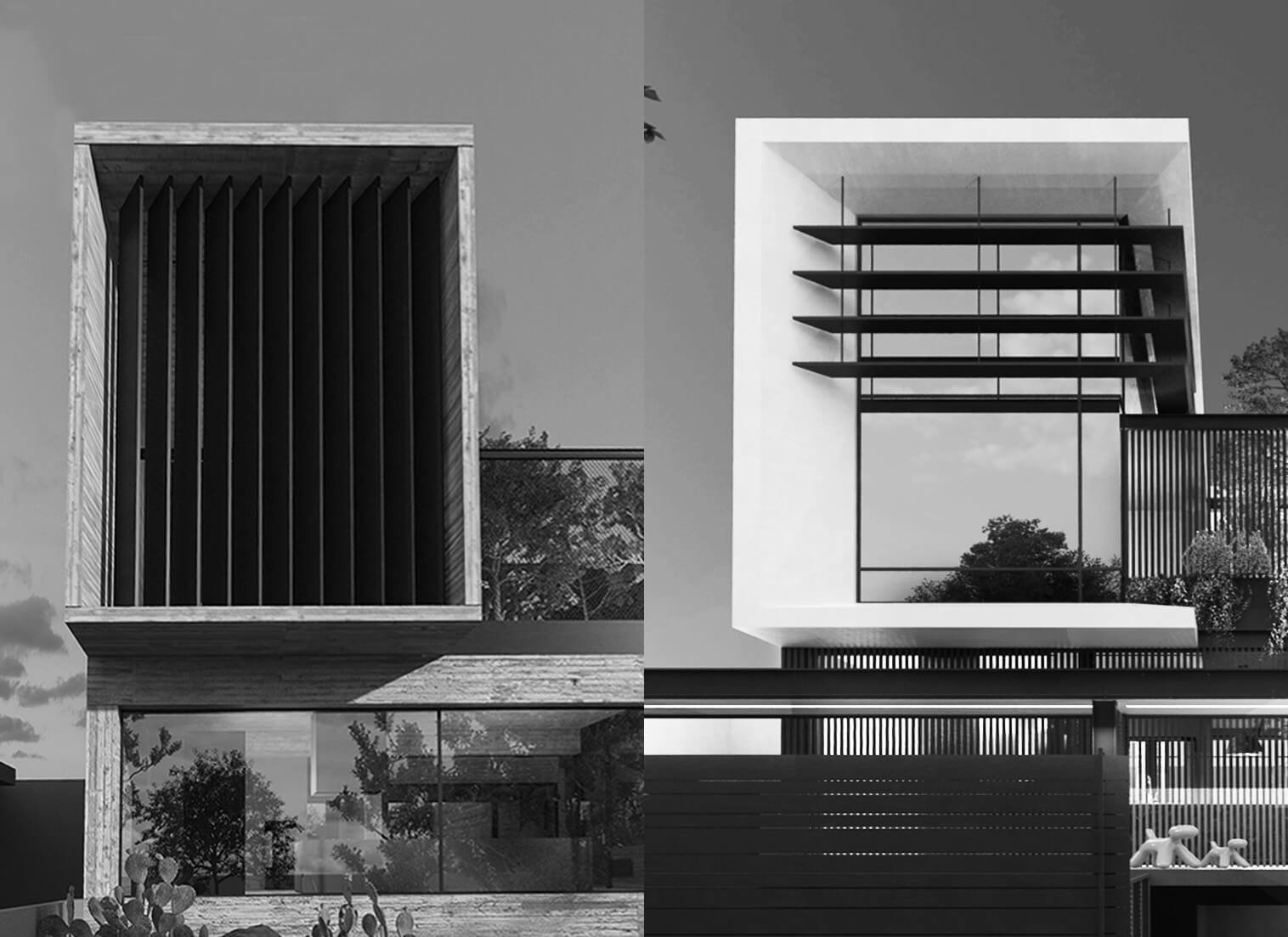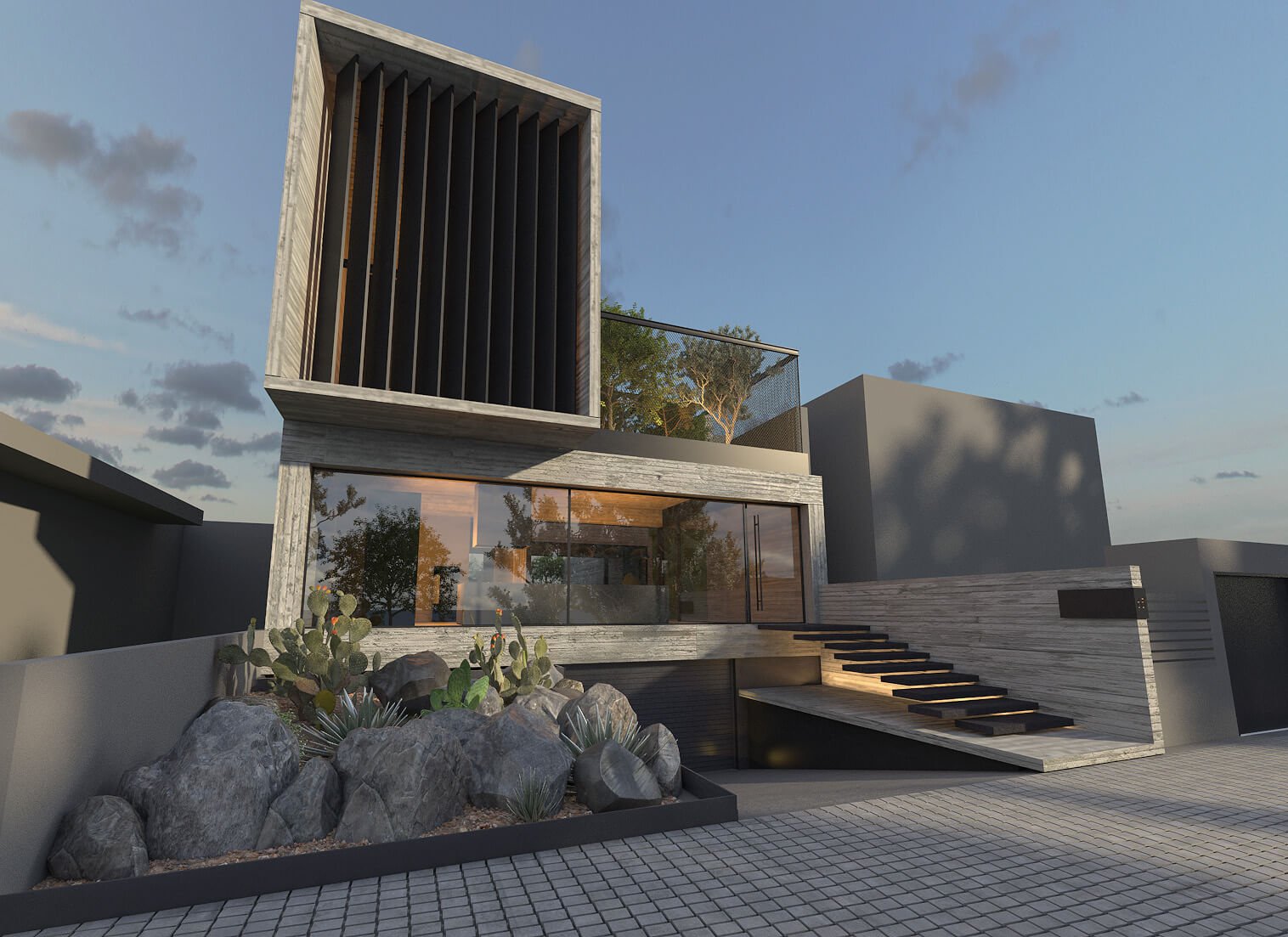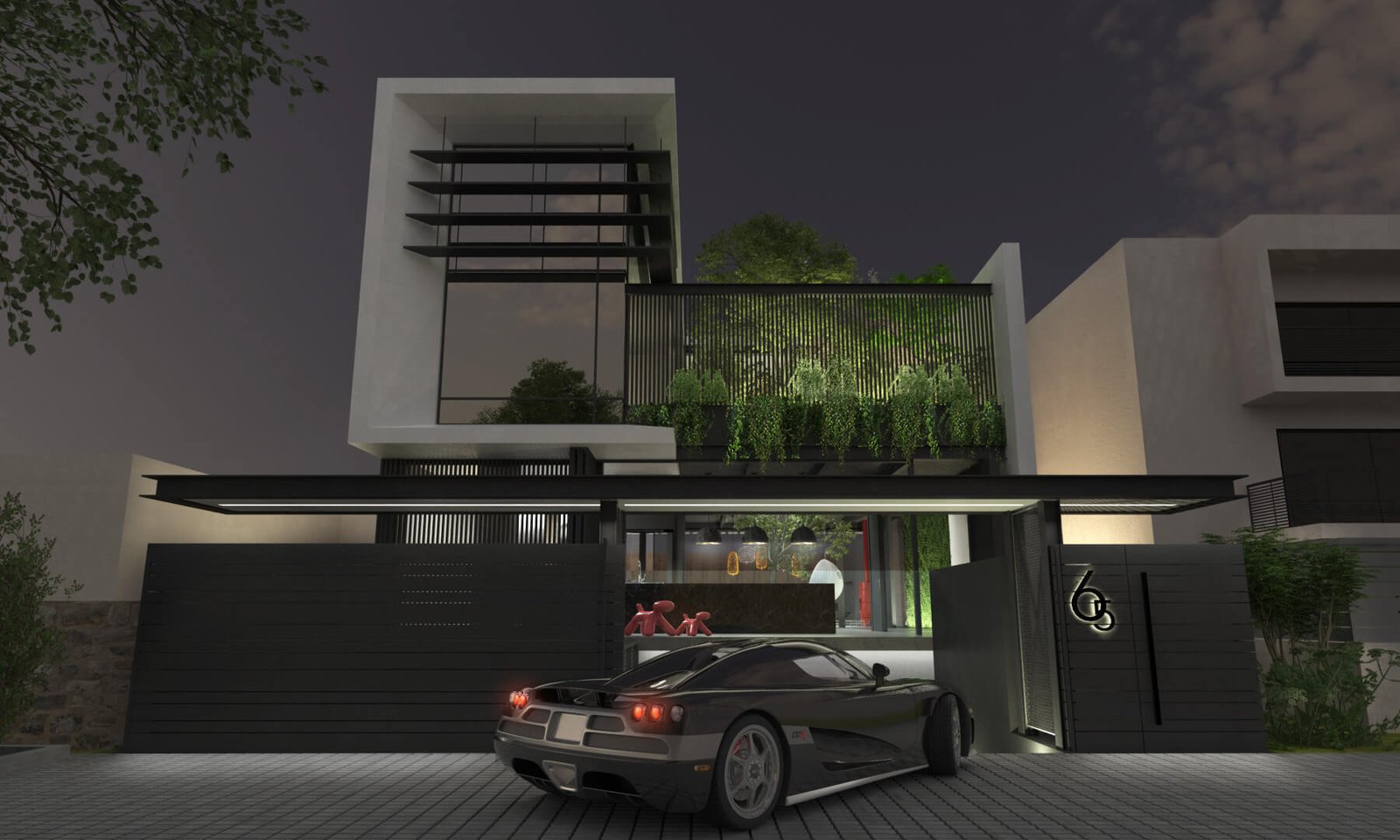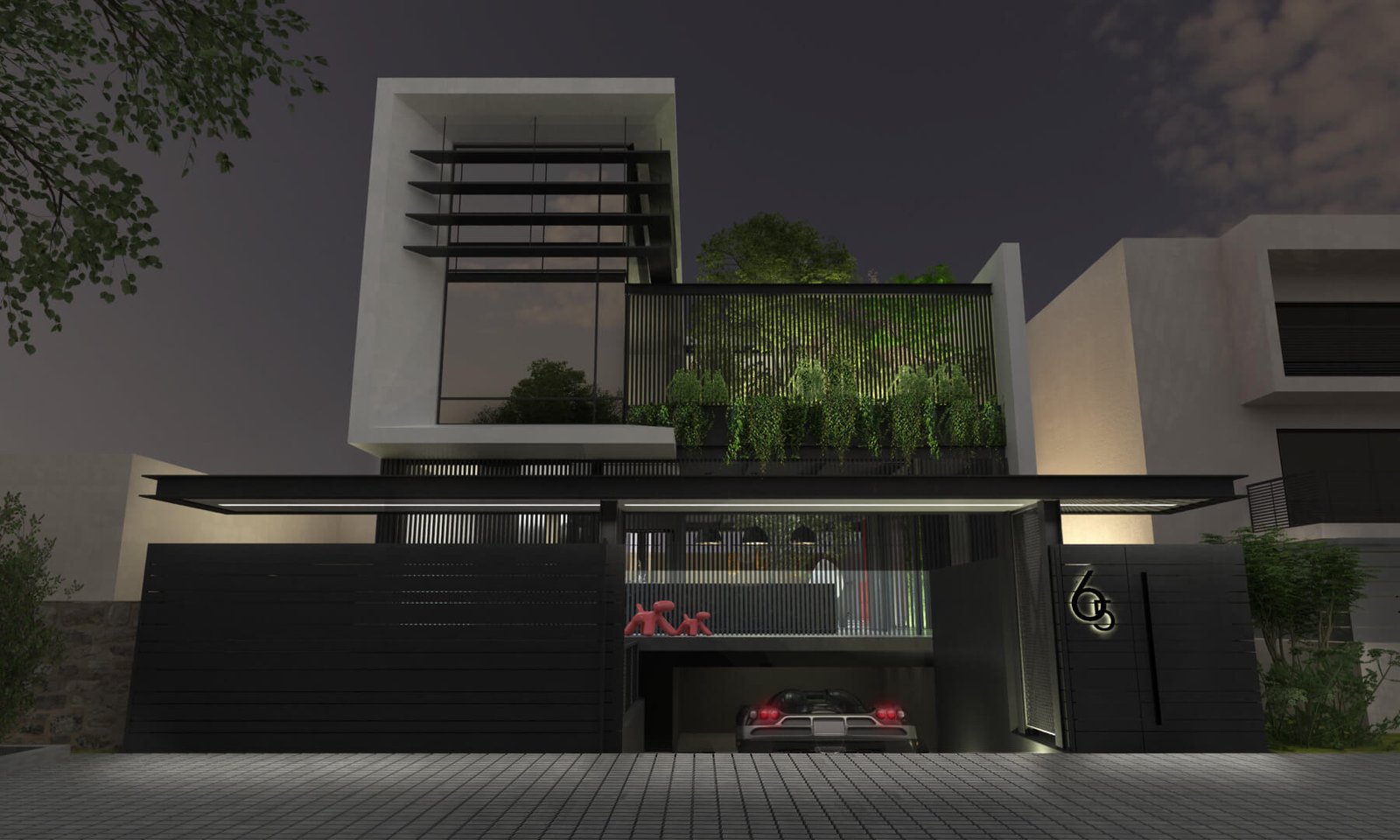The interest in this study focuses on the fact that we designed two different proposals for the same customer with a basic differentiation of the building’s bearing structure. It is therefore very important to see how these two proposals concerning the same house were implemented, keeping as a basic principle the main synthetic idea which did not differ at any point in these two studies.
This main synthetic idea is an internal patio and arose from the desire to transfer the indifferent space of the front yard facing the street, to an interior space which is isolated from the house, offering, depending on the time of year, the possibility of restricting or expanding the building and creating at the same time different qualities of space and emotions, like a storytelling of a fairy tale. Thus, we designed a building which, in the first level has a Greek P-shaped form while in the second it changes to a Gamma-shaped one. And while a front yard in the South where common practice would dictate the creation of a garden without any privacy, a patio at the core of the building does just the opposite, providing multiple possibilities as a hybrid system of spatial unity. And since the front yard does not provide privacy, we decided the complete lack of any boundary wall element, thus opening the building to the neighbourhood. To enhance the vegetation element, we now lack in the front yard, we also created a planted roof on the first level as the inner reference yard of the bedrooms, thus “embracing” the favourable South orientation.
Although the synthetic idea is the same, due to the fact that the elements of reinforced concrete and iron are very different both in size and texture, the building’s morphology presents similarities but also significant differences. Thus, the metal structured building, due to its technical characteristics, seems lighter while the concrete one is more robust, while framing the view to the street. Both of our proposals reflect an industrial interior design where the materials are rough and in their natural form, while the furniture and lighting create strong contrasts with the shell due to the sophisticated choice of these intense colours.






